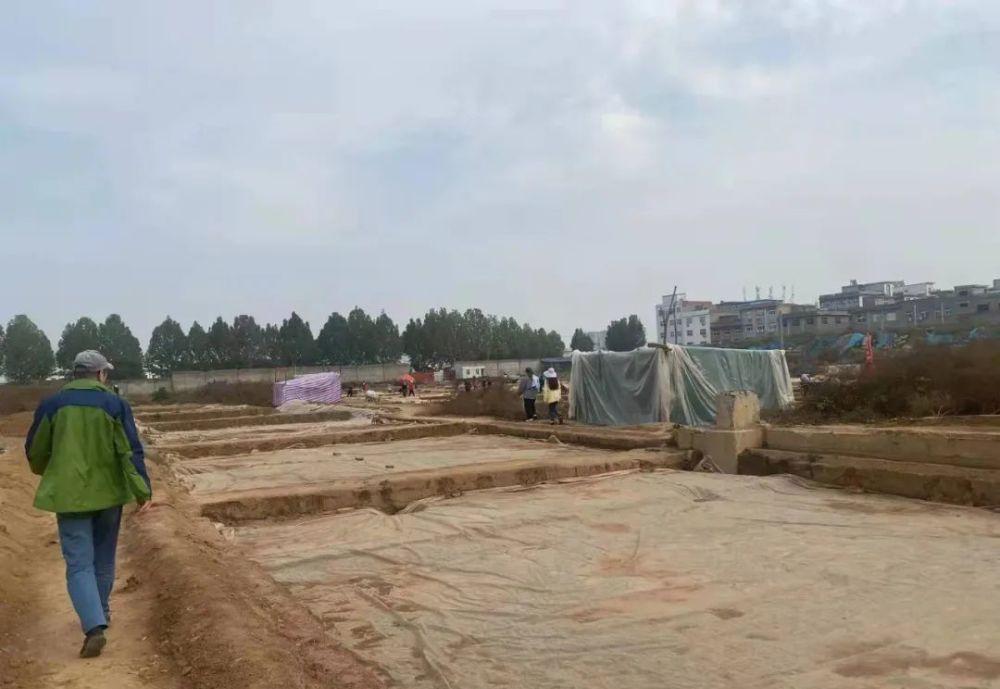Top News Henan Business Daily trainee reporter Yang Xiao
On the morning of December 14, the State Administration of Cultural Heritage held an important progress work meeting on the major project of "Archaeology china" in Beijing, in which it was reported that the archaeological discoveries at the Zhengpingfang site in Luoyang City, Sui and Tang Dynasties were speculated to be the remains of the Taiping Princess Residence, the Confucius Temple, and the Guozijian.

【The ruins of Zhengpingfang are the Confucius Temple, Guozijian and Princess Taiping residence of the Tang Dynasty】
According to the State Administration of Cultural Heritage, the ruins of Zhengpingfang in Luoyang, Henan Province, are one of the important Lifang ruins in the Guochenglifang District of Luoyang City in the Tang Dynasty, and are the location of the Tang Dynasty Confucius Temple, Guozijian, and Taiping Princess Residence (later changed to Anguo Female Taoist Temple).
The site is rectangular in plan, with a length of 533.6 meters from north to south and a width of 464.6 meters from east to west. The square is divided into three parts by a "D" shaped road: the western half of the square, the southeast district and the northeast district. The western half of the house is a large mansion, the southern half of the house is speculated to be a garden area, and the northern part is a courtyard area. The courtyard is symmetrically arranged in the central axis, with three roads in the east and west, and a total of five entrances in the middle road. Five large rammed earth platforms are distributed from the central axis to the south to the north, and are surrounded by walls (or corridors), which are presumed to be the residences of the Taiping Princess.
In the southeast area, three courtyards side by side with east and west were found, and there were north-south passages between the courtyards, and there were pavilions (or buildings) at the northern end of the passage. The east road and middle road of the courtyard are both three entrances, which are speculated to be the Confucius Temple and the Guozijian respectively.
[Princess Taiping's "mansion" accounted for half of the lifang, which was later changed by Tang Xuanzong to an Anguo Female Taoist Temple]
It is understood that Empress Wu Zetian had four sons and two daughters, and the most favored of them was Princess Taiping. In 713, Princess Taiping was suspected of rebellion, was captured by Li Longji's troops, and then ordered her to commit suicide, and the mansion of Princess Taiping of Zhengpingfang was transformed into an Anguo female Taoist temple by Tang Xuanzong Li Longji. During the An Shi Rebellion, an an empress dowager was also used by An Lushan's eldest son, An Qingxu, to imprison the Tang Dynasty general Zhen Ji.
According to Shi Zishe, captain of the Luoyang Tangcheng team at the Institute of Archaeology of the Chinese Academy of Social Sciences, it is speculated that the remains of the "mansion" of the Taiping Princess account for half of the lifang, and its architectural layout imitates the palace, including the Confucius Temple and the Guozijian, which are ceremonial buildings of a ceremonial nature and are a manifestation of the ancient Chinese architectural layout idea.
"The excavation of the Zhengpingfang site also reflects the traditional urban planning ideas of ancient China." Shi Zishe said that the pattern of the Lifang connecting the north and south square gates of the T-shaped street seen in the excavation, as well as the symmetrical and multi-progressive courtyard layout of the central axis, is the embodiment of the traditional urban planning ideas of ancient China, an important example of the development history of ancient Chinese architecture, and provides important information for the study of the history of the political system and social life history of the Tang Dynasty.
【"Pyrotechnic gas" warning! The unexplored area of the Zhengpingfang site will be excavated next year, and it is speculated that most of them are residential remains.
Shi Zishe told the top news Henan Business Daily reporter that the excavation work of the Zhengpingfang site began in April last year, and as of now, a total of more than 10 excavation areas have been excavated in the southeast corner, southeast corner, the southern end of the eastern central axis, the south end of the south square gate, the southern end of the western central axis, the northern end of the western central axis, the southwest corner, the northwest corner, the north square gate, the northeast corner and other areas.
According to Shi Zishe, the current Zhengpingfang site has not been completely excavated, "suspected of being the remains of the Taiping Princess's mansion, accounting for 1/2 of the site area, and the Guozijian and Confucius Temples each account for 1/12."
"At present, some of the excavated buildings are official-style buildings, less 'pyrotechnics', the building grade is relatively high, and the residential building areas of ordinary people have not been excavated." Shi Zishe said that it is expected that the remaining area of the Zhengpingfang site will be excavated next year, mainly concentrated in the northeast area of the site, and there will be more discoveries close to social life. (Source: Henan Daily Weibo Dahe Daily)
Editor: Liu Mengge, Li Yingxuan